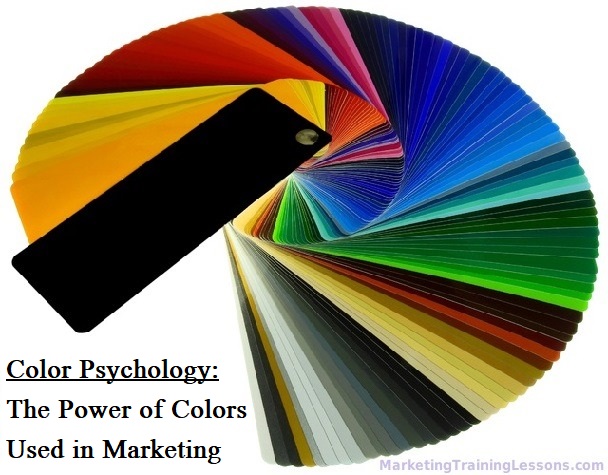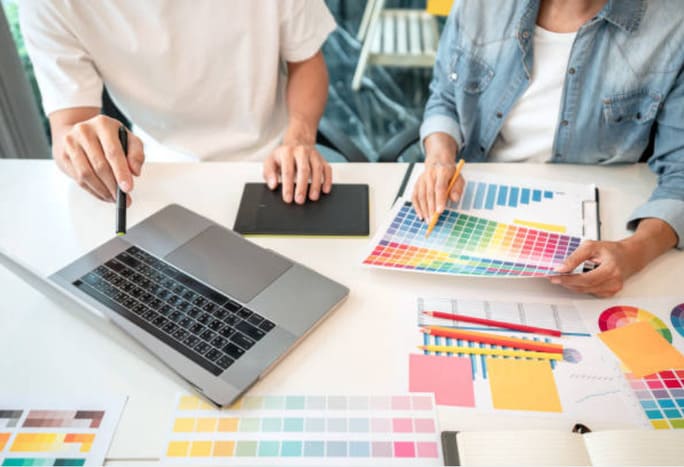Colors Used In Marketing – Discover The Power Of Color Psychology

Introduction to Color Used In Marketing
Let’s get right into it—colors used in marketing aren’t just about looking good. They’re strategic tools that can absolutely shape customer behavior and drive business results.
Color psychology, boiled down, is the study of how colors influence our moods, decisions, and actions. It’s not just theory either; there’s real data to back it up.
While no one can give a one-size-fits-all answer for how every color affects everyone, we do know some shades trigger very real responses.
For instance, red can actually boost heart rate and blood pressure. It’s energetic, bold, impossible to ignore. Blue, in contrast, tends to have a calming effect—think trustworthy, dependable, safe.
Here’s where things get interesting for your bottom line: choosing the right color can massively impact conversion rates.
We’re talking numbers—studies show some colors can increase conversions by as much as 80%. That’s not a small change; that’s a difference you’ll see in your metrics.
So, if you want to leverage color psychology and see a real uptick in performance, it’s time to pay attention to your palette. The right choice won’t just make your brand stand out—it can drive serious business growth.
Click here to see my #1 recommendation for making money online
How Colors Used In Marketing Can Dramatically Increase Your Conversion Rate: The Definitive Guide
Have you ever wondered why some online stores seem to be doing better than others?
Is it possible that they are utilizing the power of color psychology to increase their conversion rate?
In this definitive guide, we’ll explore the effects of colors used in marketing and how to use color psychology to your advantage for maximum impact.
Learn how to use colors effectively in your marketing campaigns to influence customers’ decisions and dramatically increase your conversion rate today!
How Colors Affect Emotions and Behaviors
Color affect emotions and behaviors and can have a dramatic impact on conversion rates. Understanding how they work can help you maximize your results.
Most people are unaware of the power of color and its ability to influence emotions and behaviors. This is especially important when it comes to potential customers.
Studies have shown that colors can have a significant impact on our moods, and that different colors can evoke different feelings.
For example, red is often associated with excitement and energy, while blue is associated with calmness and relaxation.
Choosing the right colors for your website or marketing materials can be the difference between a successful campaign and a flop.
If you’re not sure which colors to use, consider consulting a color psychologist.
Doing some research on color psychology will also help to find out which hues will work best for your purposes.
Benefits of Using Color Psychology in Marketing
Understanding color psychology in marketing can help you create more persuasive content that resonates with your target audience and drives conversions.
Some of the benefits of colors used in marketing include:
1. Increased brand recognition: Specific colors used in marketing especially in your branding can help customers quickly identify your company and product.
For example, Coca-Cola has long been associated with red, while Tiffany & Co. is known for its trademark blue box.
2. Improved conversion rates: Carefully select colors for your call-to-action buttons and other website elements.
This can increase the likelihood that visitors will take the desired action, such as making a purchase or signing up for a newsletter.
3. Greater customer engagement: Colors can also be used to capture attention and encourage customers to spend more time on your website or reading your content.
This is especially effective if you use colors that complement each other and create an visually appealing design.
4. Enhanced emotional response: The right colors can elicit certain emotions in your viewers, which can then be harnessed to achieve your marketing goals.
For example, if you want to evoke feelings of happiness or excitement, you might use brighter shades like yellow or orange.
Alternatively, if you want customers to feel more relaxed or calm, cooler tones like blue or green may be more appropriate.
How to Apply Color Psychology in Marketing
Color psychology is a relatively new field that is constantly evolving as we learn more about the way our brains process color information.
There are a number of ways that color psychology can be applied in marketing.
It ranges from choosing the right colors for your brand identity to using color to influence customer behavior.
Here are a few tips on how you can use color psychology in your marketing:
1. Use colors to create an emotional response. Different colors can elicit different emotions in people and you have to find the right color.
For example, blue is often associated with feelings of calm and serenity, while red may be associated with excitement and energy.
By carefully choosing colors used in marketing materials, you can create an emotional response in your customers that will influence their behavior.
2. Use colors to convey information. People often associate certain colors with certain meanings.
For example, green is often associated with growth and life, while black may be associated with death or evil.
You can use these associations to your advantage by using colors to convey specific messages in your marketing materials.
For instance, if you want to convey a message of growth and life, you might use more green in your materials than black.

Click here to see my #1 recommendation for making money online
Best Practices for Increasing Conversion Rates with Color Psychology
There are some best practices that have been established for using color to increase conversion rates.
One of the most important things to keep in mind when using color psychology is that everyone perceives color differently.
What one person finds calming may another person find energizing.
So it’s important to test different color schemes on your target audience to see what resonates with them the most.
In general, though, there are some colors that tend to produce certain effects more consistently than others.
For example, blue is often associated with trustworthiness and calmness. This makes blue a good choice for businesses that want to project an image of stability and reliability.
Green is another color that tends to evoke positive emotions like happiness and relaxation. So green is ideal for companies that want to come across as approachable and friendly.
Of course, you don’t have to limit yourself to just two colors – a well-chosen color palette can make a big impact on conversion rates.
But if you’re just starting out, focusing on two or three key colors is enough to get started.
Examples of Successful Campaigns Using Color Psychology
A number of high-profile brands have used color psychology to great effect in their marketing campaigns. Here are a few examples:
1. Coca-Cola
Coca-Cola is one of the most recognizable brands in the world, and its use of color is a big part of that.
The company’s signature red color is associated with energy, excitement, and happiness – all emotions that are closely linked to the consumption of Coke.
2. McDonald’s
McDonald’s is another brand that has made excellent use of color psychology in its marketing.
The company’s iconic golden arches are said to evoke feelings of happiness and comfort, which are obviously key emotions for a fast food restaurant.
3. Nike
Nike is a brand that is all about motivation and inspiration, and its use of the color black in its logo and advertising conveys this message perfectly.
Black is often associated with power, strength, and determination – all qualities that Nike wants its customers to associate with its products.
What Colors Work Best for Different Products?
Different colors can evoke different emotions in people, so it’s important to choose the right colors for your products. Here are some general guidelines:
– Blue is often seen as trustworthy and reliable, so it’s good for products that need to inspire confidence, such as financial services.
– Green is associated with nature and health, so it’s a good choice for eco-friendly or health-related products.
– Yellow is happy and optimistic, so it’s good for products that are meant to be cheerful or uplifting, such as children’s toys.
– Red is exciting and passionate, so it’s good for products that are meant to be attention-grabbing or high-energy, such as sports equipment.
– Black is bold and dramatic, so it’s good for products that are meant to be sophisticated or luxurious, such as fashion accessories.
– White is clean and simple, so it’s good for products that need to look neat and organized, such as office supplies.
Click here to see my #1 recommendation for making money online
Conclusion
Color psychology is one of the most powerful tools for increasing your conversion rate.
This comprehensive guide has shown you how color can influence a potential customer’s decision-making process and direct them towards a desired action.
By strategically using colors that evoke certain emotions, you can maximize your conversions and build trust with your customers.
So if you’re looking to boost your website or marketing efforts, consider implementing some of these color principles into your strategy.
Click this link or the image below to watch a video about typography, fonts, colors and how to select the best options to increase conversions.
If you are looking for quality marketing training to make money online, then click this link to see my #1 recommendation.
They helped me to have a full-time income from the internet, while working only part-time. And it is all done from home with just a laptop and an internet connection.
Thanks for taking the time to read this article about colors used in marketing. Hopefully it was beneficially for you, and you are welcome to leave comments below.


